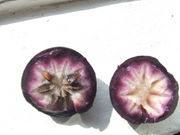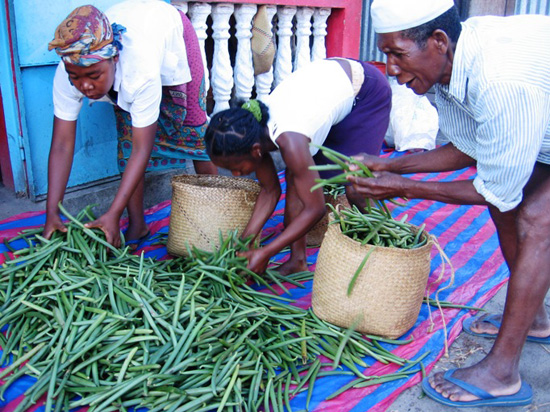I'm amazed at how superior your vanilla is!
– Des, The Grommet

Star Apple, Chrysophyllum cainito, is a member of the Sapodilla family and is native to Central America and the Caribbean. It is cultivated for its edible fruit, which is the size and shape of an apple or pear. When sliced in half there is a lovely, many pointed, star-shaped core. The surface of the fruit is firm and smooth. The skin and the flesh vary in color from white to green to purple.
The tree grows to between 25 and 100 feet and has purplish-white, yellow or greenish-yellow flowers. The fruit contains 3 – 1l ovoid seeds. The fruits do not fall from the tree and must be cut off. Star apples need to be eaten when they are very ripe; otherwise they are astringent and inedible. When ripe, they are sweet and tasty. The skin is inedible, and care must be taken to keep the latex from the tree or rind from contaminating the fruit itself.
The star apple is grown in many tropical regions worldwide, but is not grown commercially, as far as I know. I first tasted it in Tahiti, served to me by an Australian woman living on the island of Huahine. She cut the fruits in half, with the skin left on, and we used spoons to scoop out the flesh. The deep purple fruit was very pretty, but I wasn’t wildly taken by the flavor.
The star apple is used ethno-medicinally to treat diabetes and rheumatism, and to stop diarrhea and dysentery. Cubans and Central Americans have used the leaves as a cancer remedy. The latex produced by the tree is used to treat abscesses.
I was given a small bottle of Rain’s Choice in a gift basket and I have been hooked ever since. The flavor makes all of my baking so much better! I will never use grocery store vanilla again!


© 2021. All Rights Reserved
Designed/Developed by Kat & Mouse